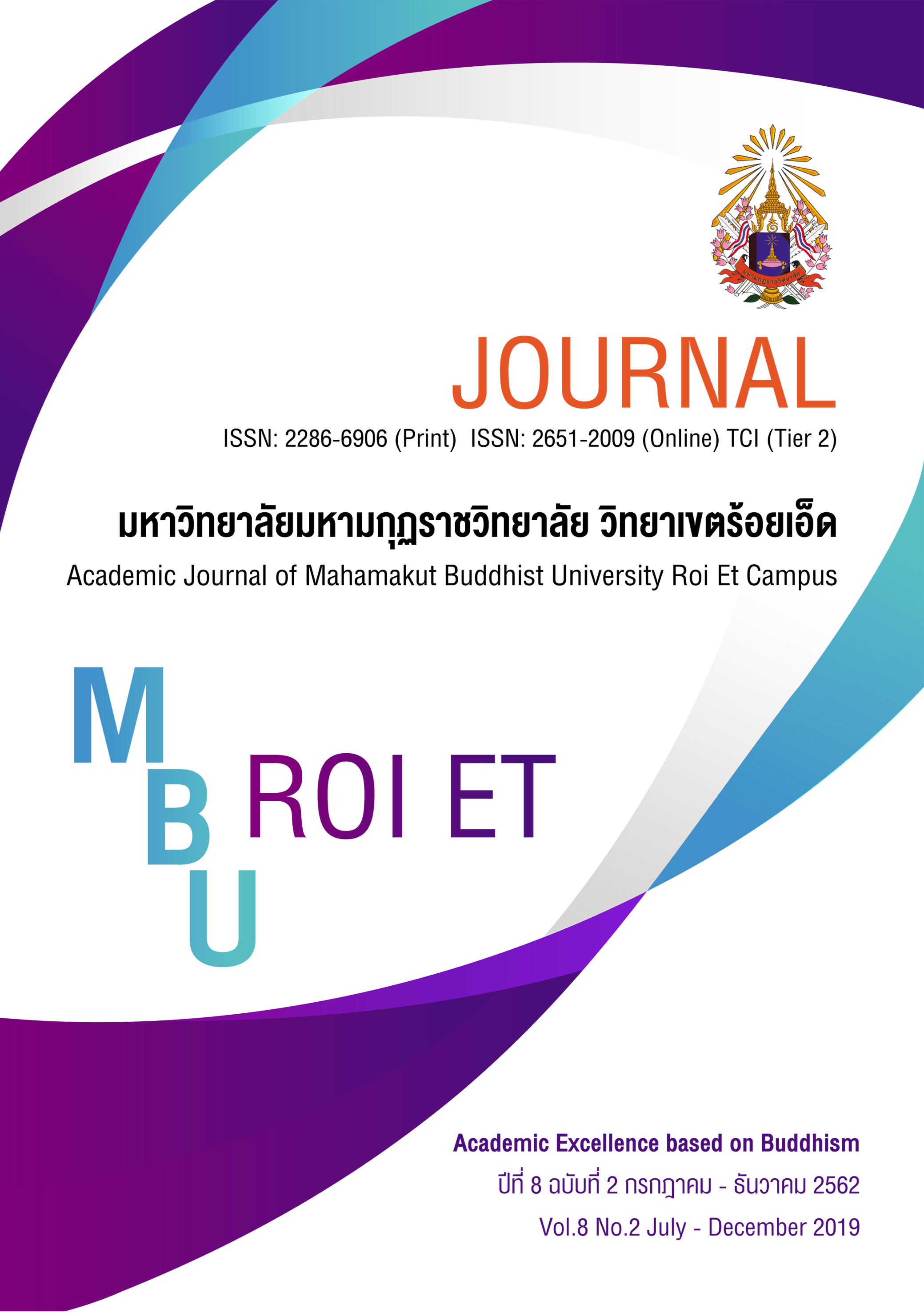The Cooperation for Study in Silk Processing to Add Value of the Products to Become International : Case Study of Buntharik District, Ubonratchathani
Main Article Content
Abstract
This research aims to study the method in silk processing with community cooperation. The research methodology is qualitative research. The key informants were the women group of silk weaving in Sombhornrat Village, Buntharik District, Ubonratchathani. The subjects were selected by using purposive sampling method. The instruments used in the research were in-depth interview, participant observation, non-participant observation, focus group discussion, and group brainstorming session (information for community session). The data were analyzed in descriptive analysis.
The results were separated into dimensions. The community economic dimension was that most of people in Sombhornrat Village work on agriculture. They grow cassava and rubber tree. They feed animals such as cow, buffalo, pig, duck, and chicken. The additional occupations are silk weaving, wickerwork, sewing, handicraft from silk worm cocoon, and growing mulberry to feed silk worm. Silk weaving dimension, the silk weaving equipment consist of beater, suspension pedal, weaving counter, pawl, treadles, bench, reed, warp beam or warp stick catcher, and heddles. Weaving dimension, the process of silk weaving is by using more than 2 warp threads in place while filling threads are woven through them using shuttle. The treadles will be stepped on switching from left to right and right to left continuously. The shuttle should be thrown with the appropriate force, not too soft. The beater should be beaten by using the equal force from both hand together. The force in beater beating should be the same for the whole length of the silk. The problem in silk processing dimension, the need is that Buntharik Silk weaving pattern should be developed to respond the need of government sections in wearing Thai silk dress to reserve Thai silk. Moreover, Thai silk is always worn in Thai traditional rituals or events. Additionally, the silk can be processed into various kinds of stuff such as bag, scarf, pillow, curtain, table sheet, neck tie, and other souvenir. In addition, English together with Thai description are needed to show on the product package to let customer know the history and the importance of the products.
Article Details
References
นโยบาย และยุทธศาสตร์การวิจัยของชาติ ฉบับที่ 8. (2555). การพัฒนาเศรษฐกิจชุมชนอย่างยั่งยืน. กรุงเทพมหานคร : อัมรินทร์พริ้นติ้ง.
ประไพรศรี สร้อยคำ. (2556). ผ้าไหมอุบล : คติความเชื่อเกี่ยวกับการทอ และการใช้ผ้าไหม. ปริญญานิพนธ์ศิลปศาสตรมหาบัณฑิต. บัณฑิตวิทยาลัย : มหาวิทยาลัยศรีนครินทรวิโรฒ.
รำไพพรรณ แก้วสุริยะ. (2551). การมีส่วนร่วมของชุมชนในการพัฒนาชนบทในสภาพสังคมและวัฒนธรรมไทย. มหาวิทยาลัยมหิดล : ศักดิ์โสภาการพิมพ์.
สมาพร คล้ายวิเชียร. (2552). การพัฒนาผลิตภัณฑ์ผ้าไหมมัดหมี่ กลุ่มทอผ้าฝ้าย-ไหม บ้านหนองผือ 24 หมู่ 1 ตำบลหนองผือ อำเภอเมืองสรวง จังหวัดร้อยเอ็ด. ปริญญานิพนธ์ศิลปศาสตรมหาบัณฑิต. บัณฑิตวิทยาลัย : มหาวิทยาลัยขอนแก่น.
สรัญญา ภักดีสุวรรณ. (2553). การออกแบบลวดลายผ้าไหมมัดหมี่ของจังหวัดมหาสารคาม ในบริบทวัฒนธรรมร่วมสมัย. ปริญญานิพนธ์ศิลปศาสตรมหาบัณฑิต บัณฑิตวิทยาลัย : มหาวิทยาลัยมหาสารคาม.
สำนักพัฒนาอุตสาหกรรมในครอบครัว และหัตถกรรม. (2558). งานอุตสาหกรรมในครอบครัว และหัตถกรรม. กาฬสินธุ์ : ประสานการพิมพ์.


